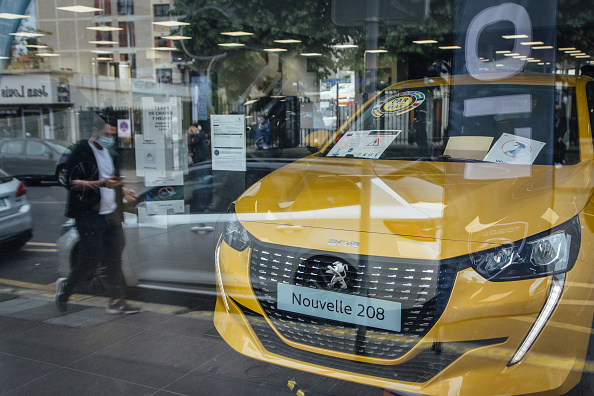Full speed ahead on the electric for Stellantis which by 2030 aims at over 70% of sales in the EU from low-emission vehicles (LEV)
The electrification strategy will leverage internal expertise, but also partnerships and joint ventures, to create advanced technologies at affordable prices. The group born from the merger between FCA and PSA thus aims at Double-digit adjusted operating profit margins sustainable over the medium term (around 2026).
Stellantis intends to become the market leader in low emission vehicles (LEV). Between now and 2030, Stellantis’ LEV mix for passenger cars is set to steadily grow over 70% in Europe, 10 percentage points higher than the industry’s current assumptions on the overall market mix. In the United States, Stellantis’ LEV mix for passenger cars and light commercial vehicles is expected to exceed 40% by 2030.
To implement this strategy, Stellantis plans to invest over 30 billion euros by 2025 in electrification and software development, including equity investments made in joint ventures to finance their respective businesses, and aims to maintain 30% efficiency. more than the sector average in the ratio between total R&D and Capex spending and revenues.
“The customer is always Stellantis’ top priority and our commitment to that investment plan of over 30 billion euros, is to offer iconic vehicles with features of performance, functionality, style, comfort and electric range that integrate seamlessly into everyday life, ”said Carlos Tavares, CEO of Stellantis. “The strategy we have defined today assigns the right amount of investments to the technologies needed to arrive on the market at the right time, ensuring that Stellantis can strengthen freedom of movement in the most efficient, economical and sustainable way.”
Stellantis indicates the reduction of costs as a priority, in line with what is indicated by the other large producers. Tavares aims to make the total cost of ownership of EV vehicles equivalent to that of internal combustion engine vehicles by 2026.
360-degree strategy with 5 gigafactory
Stellantis’ electrification strategy plans to secure over 130 gigawatt hours (GWh) of capacity by 2025 and over 260 GWh by 2030. Battery and EV component needs will be met with a total of five gigafactories in Europe and in North America, to which other supply and partnership contracts will be added to support total demand.
CEO Carlos Tavares said on EV Day that a agreement with the Italian government to build in Termoli the third gigafactory for the production of batteries for electric vehicles in Europe after those of France and Germany.
Stellantis also signed a Memorandum of Understanding (MOU) with two partners active in the extraction of geothermal lithium from frost in North America and Europe to ensure a sustainable supply of lithium, identified as the most critical raw material for batteries in terms of availability. , and to have the possibility to integrate the lithium thus acquired into the supply chain.
Target -40% battery pack costs
In addition to supporting procurement strategies, Stellantis’ synergies in terms of technical and manufacturing expertise will also help lower battery costs. The goal is to reduce battery pack costs by more than 40% between 2020 and 2024 and by an additional 20% or more by 2030. “All aspects of the battery pack can help reduce costs: l ‘general optimization of the package, the simplification of the format of the modules, the increase in the size of the cells and the progress in the chemistry of the batteries ”, remarked the auto giant in a note.
Solid state battery technology introduction planned for 2026
Stellantis’ electrification strategy envisages that the battery packs will be configured differently for different types of vehicles, from the smallest configurations for city cars to high-energy-density packs for commercial vehicles and high-performance cars. For 2024, two types of batteries are planned to be used in response to different customer needs: a high energy density option and a nickel and cobalt-free alternative. For 2026, the first competitive technology for solid state batteries is expected to be introduced.
Stellantis has already formed or is forming joint ventures for several essential technologies, ranging from electrification of powertrains and transmissions to chemistry and battery cell manufacturing to digital cockpit and customized connected services. “These partnerships will offer Stellantis the opportunity to leverage not only internal expertise but also partner specializations to accelerate the market introduction of new technologies and solutions while optimizing capital allocation to further strengthen the its competitiveness on the £ market, points out the group led by Carlos Tavares.
“Our electrification journey is probably the most important step to start defining the future of Stellantis just six months after its birth, and today the entire company is dedicating all its efforts to exceeding each customer’s expectations and accelerating our initiatives to redefine mobility around the world, ”said Carlos Tavares. “We have the size, capabilities, spirit and sustainability to be able to achieve double-digit adjusted operating profit margins, position ourselves at the head of the industry as an efficiency model, and deliver electrified vehicles that ignite customer passion.”
